Neural Scientist Training Program Fellows
Meet the current fellows chosen for the O'Donnell Brain Institute Neural Scientist Training Program (NSTP). The NSTP supports exceptional trainees who are pursuing scientific careers focused on nervous system function including the translation of fundamental insights into novel therapeutics.
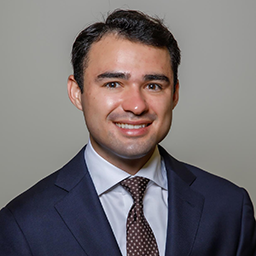
Research: I study the functional circuitry of the cerebellum and its contribution to non-motor behaviors with a specific focus on its role in social interactions. By exploring the connections between circuit-level activity and behavioral performance, my work aims to provide insights that will inform future treatments for neuropsychiatric conditions.
Why did you apply to be an NSTP fellow? I applied to be an NSTP fellow because of the program’s strong emphasis on mentorship and the opportunity to build meaningful academic relationships within the field of neuroscience. I was particularly drawn to the program’s supportive environment for sharing ideas, collaborating with peers and faculty, and growing as a scientist.
Ian ChambersMD./Ph.D. Candidate, Tsai Lab

Research: I am currently looking at molecular correlates of memory signatures in the human cortex to identify genes involved in human memory processing. The collaboration between my two labs utilizes the multidisciplinary approach of combining network electrophysiology with genomics to study the human brain.
Why did you apply to be an NSTP fellow? I believe that collaboration is the way to thrive in the academic community. This fellowship provides me the opportunity to engage with the accomplished researchers at UT Southwestern and neuroscience community as a whole.
Anne FreelinNeuroscience Ph.D. Candidate, Konopka and Lega Labs
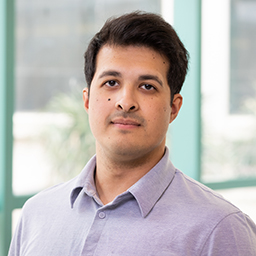
Research: I engineer novel adeno-associated viral (AAV) vectors for gene delivery and gene editing applications geared towards the central nervous system using a combination of in-silico, in-vitro, and in-vivo methodologies. I am particularly interested in how the brain changes at a molecular level precisely at the cell surface during different stages in life. Understanding the basic science behind the brain's molecular composition has the potential to engineer and translate novel AAV vectors for gene therapy in the CNS.
Why did you apply to be an NSTP fellow? The Neural Scientist Training Program creates a unique environment to work with first-rate scientists, share my ongoing work with experts in a wide range of neuroscience topics, and receive guidance from some of the best mentors UT Southwestern has to offer. I believed that this would be a program that could seriously support me during graduate school and beyond, and so far, it's exceeded my expectations.
Irvin T. GarzaNeuroscience Ph.D. Candidate, Gray and Bailey Labs

Research: I am attempting to delineate how touch circuit development contributes to mouse social behavior with the goal of expanding our knowledge of the importance of proper somatosensation development during the early stages of life.
Why did you apply to be an NSTP fellow? NSTP offers a great scientific foundation to grow where you can present your project and receive feedback from renowned scientists. You can also connect with fellow researchers to share ideas and bond which seemed very beneficial as an individual aspiring to become an accomplished neuroscientist.
Gina LeeNeuroscience Ph.D. Candidate, Choi Lab
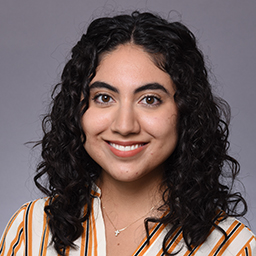
Research: I use mouse models to study brain circuits in the cerebellum that mediate social and feeding behaviors. This can aid the development of more effective treatments for autism and eating disorders.
Why did you apply to be an NSTP fellow? The program offers the opportunity to receive mentorship from accomplished scientists and build academic relationships. By providing the space to share ideas and connect with other neuroscience students and faculty, I believe being part of this initiative will greatly support my scientific career journey.
Andrea Pineda SanchezNeuroscience Ph.D. Candidate, Tsai Lab
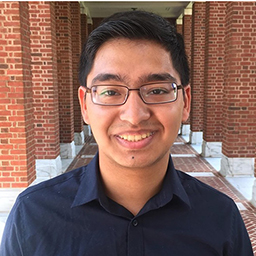
Research: I hope to become a physician-scientist who studies neurodegenerative diseases from a biophysical perspective.
Why did you apply to be an NSTP fellow? I believe that the combination of research excellence and clinical expertise at UT Southwestern, and the individualized mentorship provided by the O’Donnell Brain Institute Mentoring Committee will provide an ideal environment to pursue a physician-scientist career.
Cyrus RastegarMedical Scientist Training Program

Research: Using behavioral and optogenetic manipulations, I investigate how specialized groups of neurons in Drosophila integrate sensory input with relevant contextual information to determine interest in a novel stimulus. I hope to uncover how brains are wired to respond flexibly to the environment based on past experience and current needs.
Why did you apply to be an NSTP fellow? I hope to complete my PhD training with a well-rounded understanding of how the brain works and how to address the most urgent questions in brain research. The NSTP provides additional opportunities to receive guidance from exceptional neuroscience researchers with diverse perspectives in the collaborative atmosphere of UT Southwestern.
Chris SnellPhysiology Ph.D. Candidate, Kitamura Lab
NSTP Alumni
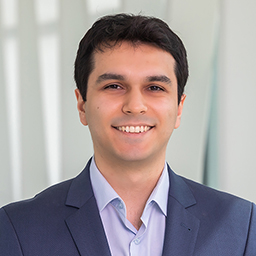
After Fellowship: Dr. Caglayan is a postdoctoral fellow in Dr. Chris Walsh's lab at Harvard Medical School where his focus is to discover brain somatic mutation patterns across human and non-human primate species to study their role in human brain evolution and disease.
Research at UTSW: Dr. Caglayan was a member of the Konopka Lab where he focused on identifying human-evolved molecular features through epigenome and transcriptome at cellular resolution and assessing their possible involvement in psychiatric diseases. As an NSTP Fellow, he published several papers, including "Molecular features driving cellular complexity of human brain evolution" in Nature, and "Association between resting-state functional brain connectivity and gene expression is altered in autism spectrum disorder" in Nature Communications.
Emre Caglayan Ph.D.

After Fellowship: Dr. Koch is a Sr. Data Scientist on the Marketing Decision Science team at Walmart Global Tech.
Research at UTSW: As a member of the Roberts Lab, Dr. Koch studied songbird learning as a unique model of speech and language disorders. During her training she published the paper "Autism-linked Gene FoxP1 Selectively Regulates the Cultural Transmission of Learned Vocalizations" in the journal Science Advances.
Therese Koch, Ph.D.

After Fellowship:
Dr. Zuurbier is a postdoctoral researcher in the Dillin lab at University of California, Berkeley where he is studying non-canonical DNA conformations during aging and developing new tools to study these transient structures.
Research at UTSW: In the Douglas Lab, Dr. Zuurbier investigated why dopaminergic neurons are hypersensitive to mechanical stress. During these studies, the lab uncovered a Dopaminergic Stress Response (DSR) which appears to actively compromise neuronal function to promote cell survival. This stress response could provide an explanation behind neuronal dysfunction upon mechanical stress, such as after a traumatic brain injury, and might extend to neurodegenerative diseases such as Parkinson’s disease. He published several papers including "Intracellular lipid surveillance by small G protein geranylgeranylation" in Nature and "Glycolytic preconditioning in astrocytes mitigates trauma-induced neurodegeneration" in eLife.
Kielen Zuurbier, Ph.D.
